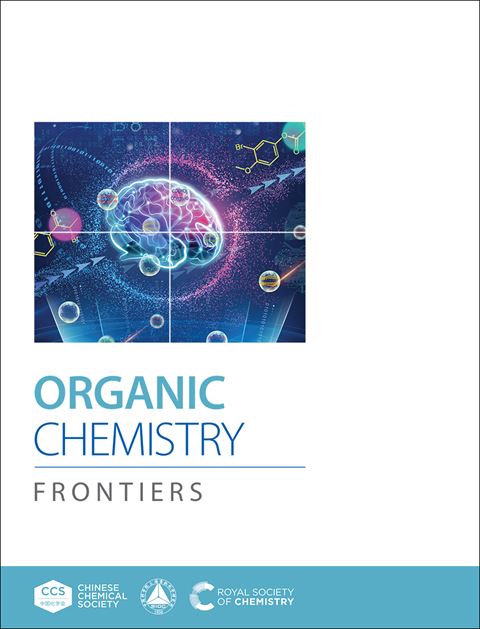In situ generated cobalt(I) catalyst for the efficient synthesis of novel pyridines: Revisiting the mechanism of [2+2+2] cycloadditions
IF 4.6
1区 化学
Q1 CHEMISTRY, ORGANIC
引用次数: 0
Abstract
The [2+2+2] cycloaddition of alkynes and nitriles is an efficient and atom-economic method for the synthesis of pyridines. However, most of the examples so far reported entail the use of diynes, which circumvents selectivity issues but limits the scope of the reaction—with examples of discrete alkynes being scarce. Moreover, the most widely used catalysts are Co(I) complexes featuring Cp or Cp* ligands, which are either too unstable to store or require harsh conditions to promote the cycloaddition reaction. This work describes a mild method for the preparation of a wide range of pyridines employing a Co(I) active species generated in situ from a well-defined, air-stable Co(III) complex—namely, [CoCp*(CH3CN)(P-N)][BF4]2—upon treatment with NaBEt3H. This complex, which contains a hemilabile P-N ligand, has been found to be substantially more active than complexes featuring monodentate or bidentate phosphanes. This behavior has been ascribed to the inadequate stabilization of the resulting Co(I) species for the former, or overstabilization of the Co(III) complex in the case of the latter. A comprehensive DFT study has been conducted to elucidate the experimentally observed chemo- and regioselectivity by examining the competitive pathways following the oxidative coupling of CoCp*(bisalkyne) complex, taking under account the participation of triplet states and intersystem crossing points.求助全文
约1分钟内获得全文
求助全文
来源期刊

Organic Chemistry Frontiers
CHEMISTRY, ORGANIC-
CiteScore
7.90
自引率
11.10%
发文量
686
审稿时长
1 months
期刊介绍:
Organic Chemistry Frontiers is an esteemed journal that publishes high-quality research across the field of organic chemistry. It places a significant emphasis on studies that contribute substantially to the field by introducing new or significantly improved protocols and methodologies. The journal covers a wide array of topics which include, but are not limited to, organic synthesis, the development of synthetic methodologies, catalysis, natural products, functional organic materials, supramolecular and macromolecular chemistry, as well as physical and computational organic chemistry.
 求助内容:
求助内容: 应助结果提醒方式:
应助结果提醒方式:


